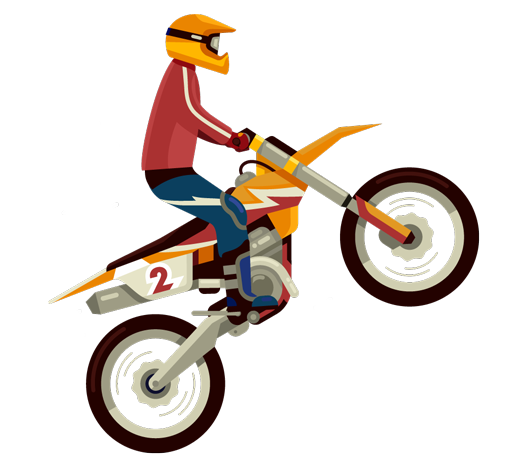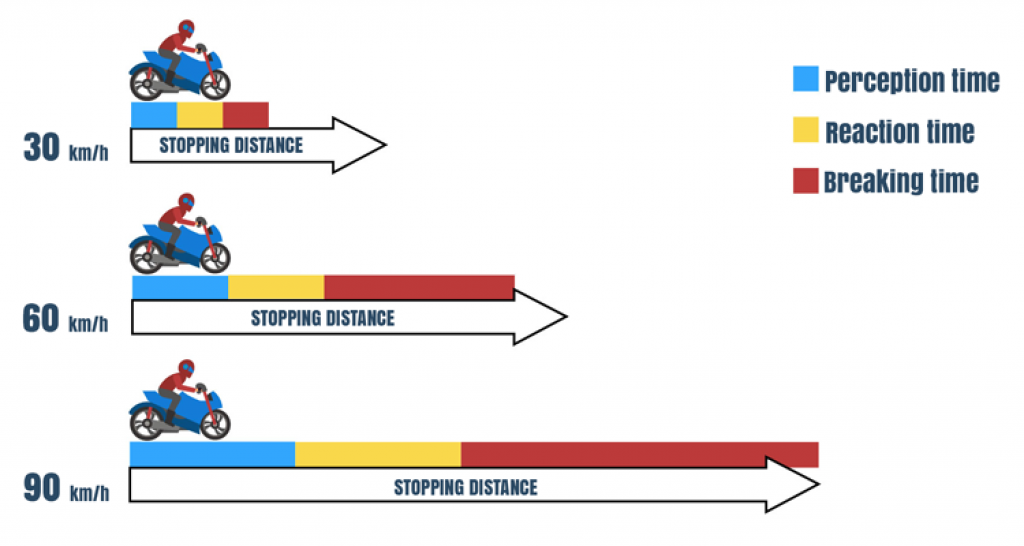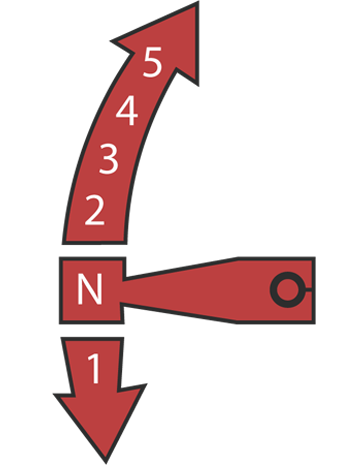
Tricks and Techniques for Motorcycle Riders
- Last update: December 2020
Riding a motorcycle seems pretty straightforward, right? While it does look simple, there’s more to it than meets the eye.
It’s one thing to ride a motorcycle and use it for commuting while it’s an entirely different thing to do tricks with it. Motorcycle tricks and riding techniques can help you get better at riding, and they’re also quite fun and exciting. On the other hand, they can also be dangerous.
For this reason, you should practice before taking your bike out on the road. Since some are easier to do than others, make sure that you’re trying the easy ones first. If you need help, stay tuned as we explain each of the most popular motorcycle tricks.
Back Brake
Most motorcycles are heavy and unwieldy, which makes them a bit tricky to ride through traffic at low speed. You have to balance and control the heavy bike while also watching out for other drivers.
This typically requires all your attention, especially if you’re doing lane-split. It requires awareness, coordination, and balance, and you could probably use all the help you can get.
While this is something you’ll learn to do overtime, there’s a trick you can implement to help you in these situations. All you need to do is use your back brake a bit differently.
Drag your brake to smooth the power delivery. This will also prep you for in case you have to stop right then and there. Dragging the back brake will reduce some of that bounciness you probably notice when moving between speeding up and slowing down.
This trick is quite easy to master, and you’ll notice an immediate difference in how you feel when moving slowly through traffic. It adds a bit to the overall smoothness of your riding, eliminating wobbling and uncertainty.
Once you feel that your riding is smoother, you can focus better on what’s going on around you rather than on trying to balance the vehicle.
The trick is simple, and all you have to do is keep a minimal amount of pressure on your brake. Provide just a little bit of friction instead of just stomping on it.
Engine Brake and Rev Match

Rev matching is a technique where you momentarily blip the throttle in order to increase the engine speed to match the road speed while you’re downshifting.
Rev matching reduces the engine braking, which then prevents locking up the back tire. It’s a technique most amateur riders and beginners rarely implement because it appears a bit tricky. However, you should try it as soon as you start feeling a bit more comfortable with your motorcycle.
It’s essential because releasing the clutch slowly puts wear on it. It also restricts you from going down the gears quickly while braking for a corner.
Rev matching is rather simple, but it does require some practice. To do it, you should quickly crack the throttle open before closing it while you squeeze the clutch. Once you press the clutch, downshift, and then release it.
This does sound like too much, and on top of that, you should do all the steps in the perfect time. Unless you time these steps correctly, you won’t be able to downshift as smoothly.
However, getting this right requires some practice. It’s something you’re supposed to do with every downshift so that you can master it as quickly as possible. Before you know it, it will become something you do without thinking about it as much.
Trail Brake
Braking in a corner sounds like madness, but it’s a trick that can help you be faster as well as safer. Your bike’s front brake will slow you down, and it will compress the front suspension and shift the weight onto the front tire.
This increases the grip and contact patch of the front tire, making the bike easier to steer. It also makes it easier for you to push the front end. The key is in braking a little later into a corner so that you’re still on the brakes as you begin to turn.
This is a bit complicated for beginners to pull off in traffic (see common beginner mistakes here), which is why it’s advised that you practice in a safer environment. Practice this on a race track without any cars around so that you’re safer in case you fall.
Once you begin to feel comfortable with trail brake, you can start braking even later into a corner. After some time and practice, you’ll get it just right, hitting the brakes just enough to turn smoothly. This technique helps you reduce speed as you approach a turn. Since you’re easing off the brakes once you enter the corner, you’re trailing off the brakes.
Many people do this because the forks are typically compressed as you turn since all the weight shifts forward. This compression tends to decrease your stability just enough so that you can quickly change direction.
The trick is mainly popular because it increases your safety. Trailing off the brakes allows you to slow in case something unexpected happens. Your bike is already on the brakes, so braking furthermore should be relatively easy and safe, depending on the road conditions.
As we mentioned, the front tire’s contact patch is increased, which means you can use the brake without upsetting the motorcycle. In essence, the trail brake trick helps you avoid obstacles smoothly.
Tight Corners
When turning in tight corners, you should first slow to a suitable speed. Going in too quickly might result in a disaster, so make sure to slow down. Once you do, release the brakes and lean the bike. Turn the handlebars and turn your head to look around.
Roll the throttle just enough not to stall and keep it steady. You should know ease out the clutch halfway before dragging the rear brake to regain speed control.

Counter Steering
Counter steering is a well-known technique used by every rider. It’s what you use to initiate the lean, steering left to lean right and the other way around.
There are many things involved from the camber thrust to roll angle and centripetal force. However, you don’t really have to understand all of this since actual practice is far more critical. To practice, you should ride down a straight road at a bit over 10mph. Hold the handlebar and open your hands so that your palms are the only thing touching the handlebars. Point your fingers up so that you can push the bar.
Once you push the bar, you’ll notice a dip to the left before your bike banks to the right. Combine this with some weight shifting, and your motorcycle will respond in the right way. Now, although this sounds relatively simple, you must practice it in a safe environment. Making an error in traffic can actually be very dangerous.
The technique is especially tricky if you also ride a car because when you’re in a car, you need to steer right in order to go right. On a motorcycle, it’s the other way around, so you’ll have to fight the instinct.This technique helps you reduce speed as you approach a turn. Since you’re easing off the brakes once you enter the corner, you’re trailing off the brakes.
Gear Shifting
Before we get into explaining the actual technique, there are a few things you need to understand. The three basic controls you’ll use are the clutch, throttle, and gear selector.
The throttle serves to rev the engine while the clutch actives and deactivates the transition. The gear selector is plain and simple, serving to select the gear.
Pull the clutch with your left hand to rev the engine without moving the motorcycle forward. But, if you release the clutch while in gear, you’ll notice the bike moves forward.
The gear pattern is typically laid out in the following order:
Proper shifting is something you’ll have to practice, much like every other technique we mentioned. Over time, you’ll notice your shifting is smoother.
To properly do it, you should disengage the clutch with your left hand. Select the appropriate gear with your left foot before twisting the throttle with your right hand. This will slightly rev the engine.
Release the clutch slowly and smoothly while feathering the throttle. This will cause the bike to accelerate, and you should rev the engine furthermore for more acceleration until you have to shift again.
Now, most beginners are confused about when is the right time to shift gears. This is because there’s no rule to this or a mathematical equation to help you pinpoint the right time.
Eyes on the Track
Keeping your eyes on the track is fundamental. Everything you do on the road is influenced by what you see, which is why you must be able to rely on your eyes.
Your visual skills should be at their maximum. If not, your perception of position, space, and speed will be negatively affected. As a result, you’ll find yourself making wrong decisions, which can be quite dangerous.
Practice your visual skills by riding in different weather conditions. Also, reduce distractions like your phone.
Keeping Your Weight Off Your Hands
Too much weight on your hands will cause hand fatigue after some time. This is a significant problem during long-distance rides, which is why you should learn how to combat it.
Lighten up the grip and try to put less weight on your wrists. Instead, hold your weight up with leg and abdominal muscles.
Keep your hands relaxed without over gripping the bars. Touch the bars only lightly; enough for you to steer the vehicle.
Braking 101 Tips
It’s unnecessary to mention all the reasons why braking is essential when riding a motorcycle. Although most people think it comes naturally once you start riding, that’s not really the truth. Quite the contrary, you need to practice properly using both back and front brakes.
On top of that, braking isn’t always the same as your technique should differ based on your riding situation and the particular bike you have.
For this reason, braking is something you should continuously practice like you practice other riding techniques and tricks. This is why advanced riders are better at braking than beginners. They simply have more experience and a better “feel”.
One of the most important things that affect your braking reflex is traffic panic. It happens when you’re supposed to make a decision and react in a split second. This panic can reduce your response time, and disable your ability to react in the right way.
Beginners should practice braking outside of traffic. This way, you can gain more confidence and have a better feeling of how you’re supposed to brake and when
Riders who didn’t ride for at least six months might also want to practice first. If you didn’t ride for a while, you should consider maybe taking a beginner rider’s class.Although you’re practicing braking each time you ride out, you should also take some time to practice it in a more secluded place where you’re not endangering other riders.
Work on your stopping ability as well as obstacle avoidance, but make sure to use both front and rear brakes together. This kind of practicing will help you develop sensitivity so that you know how hard you can push before the motorcycle locks up.
However, this is something you’re supposed to do when riding in a straight line because doing it in a turn can cause unwanted loss of traction.
Another thing you should practice is brake covering. Brake covering is a term used to describe when a rider leaves two or three fingers on the brake at all times. This helps reduce the reaction time and is especially useful to beginners.
Practice Makes Perfect
Practice makes all the difference, as we already mentioned several times throughout the article. Regardless of the technique you’re interested in and trying to master, practice is really the only thing that matters.
The practice is particularly critical for beginners and riders who didn’t ride for more than six months. Taking the time to learn how to do each of these techniques in and out the traffic makes the most significant difference. It gives you more confidence to do the tricks properly.
Conclusion
At this point, you probably have an idea of why these tricks and techniques are as popular. Some of these are quite critical and shouldn’t be avoided.
However, they all require time and effort when it comes to mastering and using them in the right way. As you noticed, each of the tricks is quite different and makes your riding smoother and more comfortable in one way or another.
For this reason, try them all on a remote parking lot or another similar area where you’re not endangering other riders. Take your practice out to the road only once you’re ready.

